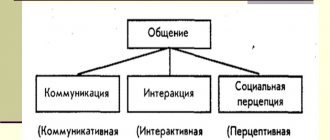The most important component of communication is communication, that is, the exchange of information. If you ask what plays the main role in this exchange, most respondents will name words, speech, language. And they will be wrong. Speech or, as psychologists say, verbal means, of course, are involved in communication, but they account for no more than 20% of the information transmitted. And the remaining 80-90% is transmitted using non-verbal language, mainly sign language, facial expressions and pantomime.
What is kinesics
What is kinesics? This is a science that studies the role of gestures, facial expressions, body movements and other non-verbal manifestations in the process of communication. Some of the first studies of kinesics were carried out by Charles Darwin in his work on the expression of emotions in animals and humans. The concept of “kinesics” was first used by R. Birdwhistell in 1952.
Unlike speech, kinetic manifestations are not so much subject to volitional control. Often they can provide even more information than words. Gestures and facial expressions allow a person to more accurately convey to the interlocutor the meaning of what was said, express his attitude to the information, and reveal details in detail. The listening person, using non-verbal means, reads additional information, can distinguish truth from lies, and can also simply support the speaker and show his concentration on him, for example, by nodding his head or facial expressions.
Nonverbal and verbal means of communication
Communicative interaction or communication is a rather complex multifaceted process of first establishing and then developing contacts between individuals, caused by the need for joint activities and covering the exchange of messages, the development of a general direction or strategy of interaction and perception with subsequent understanding of another subject. Communication interaction consists of three components:
- Communicative, representing the direct exchange of information between communicating people;
- Interactive, which consists in organizing interaction between subjects;
- Perceptual, consisting in the process of individuals perceiving each other and establishing mutual understanding.
Communicative interaction can be verbal and non-verbal. In the process of everyday life, individuals talk with many people, using both verbal and non-verbal language. Speech helps people share knowledge, worldviews, make acquaintances, establish social contacts, etc. However, without the use of non-verbal and verbal means of communication, speech will be difficult to understand.
Features of nonverbal communication and verbal interaction consist in the use of various tools for accepting and analyzing incoming data during communications. Thus, people use intelligence and logic to perceive information conveyed by words, and they use intuition to understand nonverbal communication.
Verbal communication implies an understanding of exactly how speech is perceived by a communication partner and what impact it has on him. After all, speech is one of the fundamental means of interpersonal communication.
For the human individual, a phenomenon begins to exist in the full sense when it is named. Language is a universal means of human interaction. It is the basic system by which people encrypt information and the most important communication tool. Language is considered a “powerful” encryption system, but at the same time it leaves room for destruction and the creation of barriers.
Words make the meaning of phenomena and circumstances clear; they help individuals express thoughts, worldviews and emotions. Personality, its consciousness and language are inseparable. Often the language is ahead of the flow of thoughts, and often does not obey them at all. An individual can “blurt out” something or systematically “waffle his tongue” at the same time, practically without thinking about the fact that with his statements he forms certain attitudes in society, directs them to a specific reaction and behavior. Here we can apply the saying: “what comes around, comes around.” With the correct use of words, you can control such a response, predict it, and even shape it. Many politicians master the art of using words correctly.
At each stage of communication interaction, obstacles arise that hinder its effectiveness. In the course of interaction, the illusory nature of mutual understanding between partners often arises. This illusion is due to the fact that individuals use the same words to denote completely different things.
Data loss and information distortion occur at every stage of communication. The level of such losses is determined by the general imperfection of the human language system, the inability to accurately and completely transform thoughts into verbal structures, personal attitudes and aspirations (wishful thinking is perceived as reality), literacy of interlocutors, vocabulary, and so on.
Interpersonal communication interactions are mainly carried out through the use of non-verbal tools. Nonverbal language is considered richer than verbal language. After all, its elements are not verbal forms, but facial expressions, body positions and gestures, intonation characteristics of speech, spatial frames and time boundaries, a symbolic communicative sign system.
Often, nonverbal language of communication is not the result of a deliberate behavioral strategy, but a consequence of subconscious messages. That is why it is very difficult to fake. The individual unconsciously perceives small non-verbal details, considering such perception as a “sixth sense”. Often people unconsciously notice discrepancies between spoken phrases and non-verbal signals, as a result of which they begin to distrust the interlocutor.
Facial expressions
Facial expressions are various movements of the facial muscles and their combinations. It is quite weak to control; it is not always possible to restrain an impending smile or frowning eyebrows. With the help of facial expressions, a person can express a whole range of emotions without words: sadness, anger, joy, tenderness, surprise, delight, disappointment, bewilderment and others. More than other parts of the face, the eyebrows and mouth are involved in facial expressions.
There are people with well-developed ability to control their own facial muscles. It is sometimes not possible to correctly recognize their emotions or the veracity of information. They can enhance facial expressions or, conversely, restrain them. However, it is not always possible to completely control these processes during a conversation, so it is necessary to constantly compare the words and facial expressions of such people.
Communication nonverbal communication
The surrounding society can learn a lot about an individual solely by his manner of choosing clothes and conversation, gestures used, etc. As a result of many studies, it was revealed that non-verbal methods of communication have two types of source of origin, namely biological evolution and culture. Nonverbal means of communication are necessary for the purpose of:
- regulating the flow of the process of communicative interaction, creating psychological contact between interlocutors;
- enriching the meanings conveyed through words, guiding the interpretation of the verbal context;
- expressing emotions and reflecting the interpretation of situations.
Non-verbal communications include well-known gestures, facial expressions and bodily postures, as well as hairstyle, clothing style (clothes and shoes), office interior, business cards, accessories (watches, lighters).
All gestures can be divided into gestures of openness, suspicion, conflict or defense, thoughtfulness and reasoning, uncertainty and doubt, difficulty, etc. Unbuttoning a jacket or reducing the distance between a conversation partner is a gesture of openness.
Rubbing your forehead or chin, trying to cover your face with your hands, and especially avoiding eye contact and looking away to the side indicate suspicion and secrecy. Gestures of conflict or defense include crossing your arms and clenching your fingers into a fist. The thoughtfulness of the interlocutor is indicated by pinching the bridge of the nose, a hand on the cheek (the “thinker” pose). Scratching the space above the earlobe or the side of the neck with your index finger means that the interlocutor doubts something or indicates his uncertainty. Scratching or touching the nose indicates a difficult situation for the person talking. If during a conversation one of the participants lowers his eyelids, then such an action communicates his desire to end the conversation as soon as possible. Scratching the ear demonstrates the interlocutor's rejection of what the partner is saying or the way he is pronouncing it. Stretching the earlobe reminds that the partner is already tired of listening, and he also wants to speak out.
Non-verbal communications also include handshakes, which express the different positions of the participants in the communication interaction. Grabbing the hand of one of those meeting in such a way that its palm is down indicates the authority of the interlocutor. The equal status of those meeting is indicated by a handshake, in which the hands of the participants are in the same position. Stretching out one hand with the palm facing up indicates submission or submission. Emphasizes the different status of those meeting or a certain distance in position, or expresses disrespect by shaking with a straight, unbent hand. Extending only the tips of your fingers for a handshake indicates complete disrespect for the other individual. A handshake with two hands indicates trusting sincerity, excess of feelings, and closeness.
Also, handshakes of citizens of different countries may differ. For example, Americans are characterized by strong, energetic handshakes. After all, they talk about strength and efficiency. For people from the Asian part of the continent, such handshakes may cause bewilderment. They are more accustomed to soft and long handshakes.
Nonverbal communication plays an important role in business communication. For example, picking up lint from a suit is a gesture of disapproval and disagreement in negotiations. In order to prolong the pause before making the final decision, you can take off your glasses and put them on or wipe the lenses. You can also highlight actions that will non-verbally indicate the desire to complete the meeting. These include: pushing the body forward, with the hands placed on the knees or on the armrests. Hands raised behind the head demonstrate that for the interlocutor the conversation is empty, unpleasant and burdensome.
Nonverbal language of communication is even evident in the way an individual smokes. A closed, suspicious communication partner directs the exhaled stream of smoke downward. Stronger hostility or aggression is indicated by exhaling smoke from the corners of the mouth downwards. The intensity of smoke exhalation is also important. The rapid exhalation of smoke indicates the interlocutor's confidence. The faster it is, the more confident the individual feels. The more intense the flow is exhaled downwards, the more negative the interlocutor is. Ambition is indicated by exhaling smoke through the nostrils with the head raised up. The same thing, but with the head down, indicates that the individual is very angry.
Verbal and non-verbal means of communication during communicative interaction are perceived simultaneously, as a result of which they should be analyzed as an indivisible whole. For example, during a conversation with a smiling, nicely dressed person with a pleasant timbre of voice, his interlocutor, without realizing it, may still leave his partner because he does not like the smell of his eau de toilette. Such a non-verbal action will make the partner think that not everything is all right with him, for example, with his appearance. Understanding this may cause you to lose confidence in your own words, your face to turn red, and ridiculous gestures to appear. This situation indicates that verbal and nonverbal means of communication are inextricably linked. After all, gestures that are not supported by words are not always meaningful, and words in the absence of facial expressions are empty.
Sight
Gaze and eye contact with the interlocutor play a huge role in communication. With just your eyes you can express contempt or respect, interest in a conversation or boredom, confidence or shyness. Even the pupils can provide information about a person at a given moment. Dilated pupils often mean emotional excitement and a positive mood, while constricted pupils indicate uncertainty or a bad mood.
The frequency and duration of eye contact also matters. A self-confident person can communicate without almost taking his eyes off the interlocutor. Also, long-term eye contact is established between well-known and close people with whom you can be frank. Jerky glances, lowering the eyes to the floor or constantly looking them to the side can indicate a person’s lack of confidence in himself or in the information he is giving out. Lies, lack of emotional contact with the interlocutor and reluctance to talk are also manifested in a similar way.
Types of nonverbal communication
Nonverbal interaction plays a significant role in the process of mutual exchange of emotions.
Types of nonverbal communication:
- voice, gestures, appearance (including clothing, body position);
— facial expressions (presence of a smile, direction of gaze);
- movements (nodding or shaking the head, swinging limbs, imitating some behavior, etc.);
- gait, touching, hugs, handshakes, personal space.
Voice is the sound that an individual makes during a conversation, when singing or shouting, laughing and crying. Voice formation occurs due to vibration of the vocal cords, which create sound waves as exhaled air passes through them. The voice cannot develop without the participation of hearing; in turn, hearing cannot develop without the participation of the vocal apparatus. So, for example, in an individual suffering from deafness, the voice does not function due to the absence of auditory perceptions and stimulation of speech motor centers.
In nonverbal communication, it is possible to convey the enthusiastic or interrogative nature of a sentence using just one voice intonation. Based on the tone in which the request was stated, one can conclude how important it is for the speaker. Often, due to the wrong tone and intonation, requests can sound like orders. So, for example, the word “sorry” can have completely different meanings depending on the intonation used. Also, using the voice, the subject can express his own state: surprise, joy, anger, etc.
Appearance is the most important component of nonverbal communication and it implies an image that a person sees and perceives around him.
Nonverbal business communication begins to be built precisely from the assessment of the external attributes of the individual. Acceptable appearance depends on the following characteristics: neatness, good manners, natural behavior, presence of manners, literacy in speech, adequate reactions to criticism or praise, charisma. In life, it is very important for each individual to be able to correctly use the capabilities of his own body when transmitting information to his interlocutor.
Non-verbal communication in business communication is absolutely necessary. After all, business people often have to convince their opponents of something, persuade them to their own point of view and perform certain actions (concluding deals or investing a significant amount in the development of an enterprise). It will be easier to achieve this if you can demonstrate to your partner that the interlocutor is honest and open.
No less important is the position of the body (posture) during the conversation. Using posture, you can express subordination, interest in a conversation, boredom or a desire for a joint partnership, etc. When the interlocutor sits motionless, his eyes are hidden under dark glasses, and he covers his own notes, the other person will feel quite uncomfortable.
To achieve success, nonverbal business communication does not imply the use of postures at business meetings that demonstrate closedness and aggressiveness. It is also not recommended to wear glasses with tinted lenses during any communications, especially at the first meeting. Since, without seeing the eyes of a communication partner, the interlocutor may feel awkward, because the lion's share of information remains inaccessible to him, as a result of which the general atmosphere of communicative interaction is disrupted.
The poses also reflect the psychological subordination of the participants in the conversation. For example, the desire for submission or dominance.
Thus, nonverbal communicative interaction is one of the tools of personal representation of one’s own “I”, an instrument of interpersonal influence and regulation of relationships, forms the image of the interlocutor, clarifies and anticipates the verbal message.
Gestures
Gestures are voluntary and involuntary movements of the hands and head during communication. Gestures can say a lot about a person himself. Active movements are usually characteristic of people with an extroverted personality, with a sanguine or choleric temperament, a high level of self-confidence and good self-esteem. Individuals with an introverted personality, melancholic, phlegmatic, and insecure people usually display a rather meager range of gestures.
Movements of the head and hands also say a lot about the current state of a person. The more active the gestures, the more interested the person is in the conversation and in being heard. Very weak or absent gestures often indicate that the person is not interested in the conversation. It may also indicate an attempt to deceive the interlocutor.
Three main groups of gestures can be distinguished:
- Communicative. Used in any type of communication, they usually accompany greetings, farewells, and attempts to attract attention to oneself. Examples include shaking or waving your hand.
- Modal. With their help, a person expresses his attitude to the information spoken or heard. For example, nodding your head as a sign of approval or turning away, indicating reluctance to continue the conversation.
- Descriptive. These are gestures that have meaning in the context of the actual conversation. For example, a person uses gestures to show the size of a caught fish or uses them to describe the layout of his house under construction.
It is worth understanding that in different peoples and cultures, gestures can differ and even be opposite. For example, a simple nod of the head means agreement in some countries, and denial in others. Another example is twisting your finger at your temple. In Russia it is interpreted as stupidity, in India as a sign of respect, and in Holland as an indicator of high wit.
Common Gestures
Gestures may vary in meaning from person to person, but there are generally accepted movements that are very common in communication. These include, for example, the following manifestations:
- a person touches or scratches his ears as a sign that he does not like the information he hears;
- rubs his chin – he feels bored and lacks interest;
- strokes his chin - reflects and ponders;
- taps his fingers and constantly glances at the clock - he is in a hurry, nervous or impatient;
- crosses his arms over his chest - most likely, does not want to talk;
- rubs his neck - not sure of the information said or heard;
- puts his hands behind his head or behind his back - trying to demonstrate his superiority over his interlocutor;
- covers his mouth - he is hiding something or is not saying something, perhaps he is providing deliberately false information.
Hand gestures and their meaning
People use their hands most often. Hand gestures and their meaning are given great importance in psychology. There are a huge number of poses with them that signify certain experiences. Here are some of them:
- Open palms mean openness and truthfulness of what was said, trust;
- Closed palms (turned towards you) mean an invitation to mutual understanding and even physical contact;
- "OK" gesture. Here it does not mean agreement, but a sign of pedantry and morality;
- Open palms with bent fingers - the desire for power and dominion;
"Ok" sign
- Clasped hands on the legs and face show unfulfilled hopes;
Gait
Gait is the style of movement of a person. It can say a lot about its owner. For example, a heavy gait indicates a person is overwhelmed with thoughts and is depressed. Light, “flying” - about high spirits and optimistic thinking. A person who is hunched over, with his head down and shuffling his feet often turns out to be unsure of himself, while someone who is straightened up and with his chin raised moderately high has good self-esteem and is very confident in himself.
A person with an active lifestyle and prone to taking initiative walks confidently, with long steps and moderate swinging of his arms. People who are unsure of themselves most often hide their hands in their pockets or behind their backs. A thinking person walks slowly, as if tracking his every step. People walk with their chins high and their legs straight, trying to demonstrate their superiority over others.
Undesirable postures when communicating with an interlocutor
All of the postures described below are undesirable and should be eradicated when communicating not only during business negotiations, but also during normal communication, even with strangers:
- Crossed arms on the chest or on the hips - aggression and protection;
- “Footballer’s Pose” – protection and weakness;
- Interlacing hands behind the back - fear;
Poses
- The position of the hands in the pockets indicates excitement and nervousness;
- Leaning back in a chair means distrust and disagreement.
Pose
When communicating about the interlocutor, his body position can say a lot. This sign is also poorly controlled, since parents from childhood teach the baby to control his gestures and emotions, and pay attention to posture extremely rarely. During communication, the posture may change depending on the content of the conversation and the relationship of the interlocutors with each other.
Thus, psychologists distinguish three groups of postures:
- Open and closed. Openness is evidenced by a relaxed posture, turning the body towards the interlocutor, and open palms. About closedness - crossing legs and arms, tilting the body away from the interlocutor, interlocking fingers, constantly trying to hide the palms.
- Dependent and dominant. The dominant person tries to appear taller, hover over the interlocutor, look down on him, pat him on the back or shoulder. A dependent person lowers his head, averts his eyes, and looks from under his brows.
- Harmonious and opposing. In a harmonious conversation, the interlocutors take positions that correspond to each other. In the event of a confrontation, fists may be clenched, one shoulder is forward, the chin is raised, and the hands are placed on the sides or hips.
How to recognize body language
It is difficult to fake body language, and to learn to recognize it, you just need to be attentive. To date, many books have been written on determining nonverbal behavior and controlling emotions. I can recommend the book “Body Language. How to Read the Minds of Others by Their Gestures by Allan and Barbara Pease, and I See What You're Thinking by Joe Navarro.
In order to learn to recognize gestures and postures, you need to carefully monitor:
- the position of the interlocutor's head;
- his facial expressions;
- arms and legs;
- closed and open postures, under what conditions they appear;
Gestures
- emotions.
Studying people by facial expressions
A person’s face reflects his true thoughts and emotional experiences. People show the “movement” of their thoughts and intentions, without noticing it, with the help of their facial muscles.
Interesting: A little about chocolate
Each person is individual in their own way. But emotions such as joy, surprise, love, delight or fear, anger - people all over the world express the same way. This is genetics and there is no escape from it.
Interesting! A smile is different from all other expressions - it expresses joy using only one muscle. (Arthur Conan Doyle)
You look at the person's face when you communicate. But not everyone has the ability to not only look into the face of an interlocutor, but also to see his mood. ... So you have to learn this.
Of course, this is not particularly necessary. But the ability to read a person’s thoughts by face increases the chances and opportunities for more effective and efficient communication.
This skill will be especially useful for specialists who work with people: managers, doctors, lawyers, teachers, etc.
This is interesting! “Posture in diplomacy and in family life is the basis. Whoever was the first to take a pose will be the master until the end... You can’t make a mistake in anything here: not in a look, not in a gesture and, God forbid, in a premature smile.” (Writer, historian - Yulian Semenov)
How should we relate to the emotions that a person conveys with his face?
American psychologist, professor Paul Ekman argues that the expression of emotions on the face is more trustworthy than words.
Well-known business consultant, Asya Barysheva says that “our face, whether we like it or not, is a conductor of views, relationships, emotional experiences... Any emotion immediately involves several muscle groups”
But, often, the expression of emotions on the face can be deceiving.
Pretense makes a person “lie” with his face. People learn to control their facial expressions.
How can you distinguish truth from lies by the emotions on your face?
There are several rules for this:











